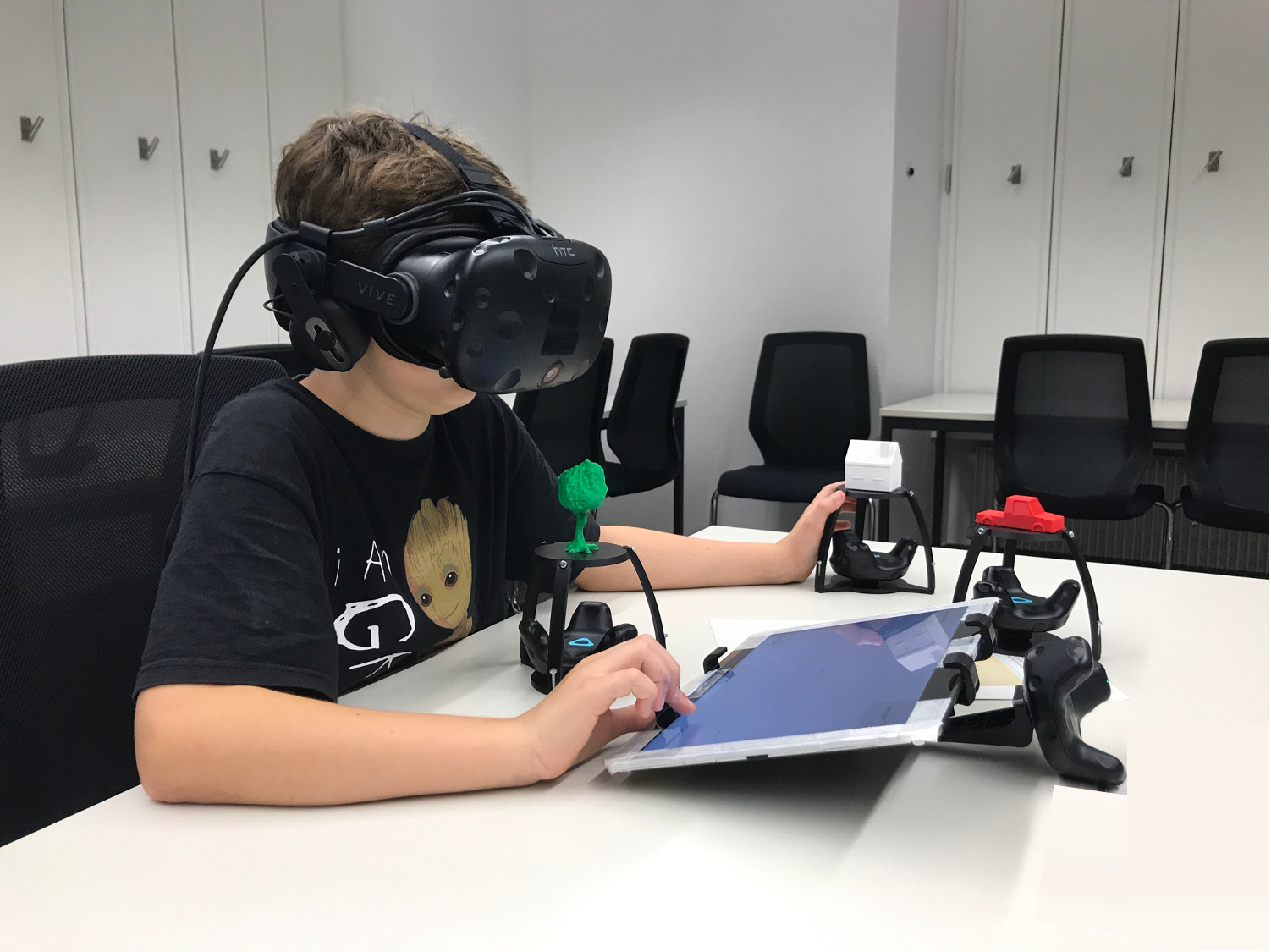We are happy to present you this year’s contributions from the German HCI labs to CHI 2021! Feel free to browse our list of publications: There are 53 full papers (including one Best Paper and five Honorable Mentions), 16 LBWs, and many demonstrations, workshops, or other interesting publications. Please send us a mail if you feel that your paper is missing or to correct any entries.
A Closer Look at Machine Learning Code
Thomas Weber (LMU Munich), Christina Winiker (LMU Munich), Heinrich Hußmann (LMU Munich)
Abstract | Tags: Late Breaking Work | Links:
@inproceedings{2021WeberLook,
title = {A Closer Look at Machine Learning Code},
author = {Thomas Weber (LMU Munich), Christina Winiker (LMU Munich), Heinrich Hußmann (LMU Munich)},
doi = {10.1145/3411763.3451679},
year = {2021},
date = {2021-05-01},
abstract = {"Software using Machine Learning algorithms is becoming ever more ubiquitous making it equally important to have good development processes and practices. Whether we can apply insights from software development research remains open though, since it is not yet clear, whether data-driven development has the same requirements as its traditional counterpart.
We used eye tracking to investigate whether the code reading behaviour of developers differs between code that uses Machine Learning and code that does not.
Our data shows that there are differences in what parts of the code people consider of interest and how they read it. This is a consequence of differences in both syntax and semantics of the code.
This reading behaviour already shows that we cannot take existing solutions as universally applicable. In the future, methods that support Machine Learning must iterate on existing knowledge to meet the challenges of data-driven development."},
keywords = {Late Breaking Work},
pubstate = {published},
tppubtype = {inproceedings}
}
We used eye tracking to investigate whether the code reading behaviour of developers differs between code that uses Machine Learning and code that does not.
Our data shows that there are differences in what parts of the code people consider of interest and how they read it. This is a consequence of differences in both syntax and semantics of the code.
This reading behaviour already shows that we cannot take existing solutions as universally applicable. In the future, methods that support Machine Learning must iterate on existing knowledge to meet the challenges of data-driven development."
A Study on the Size of Tangible Organ-Shaped Controllers for Exploring Medical Data in VR
Anke V. Reinschluessel (Universität Bremen), Thomas Muender (Universität Bremen), Tanja Döring (Universität Bremen), Verena Uslar (Universitätsklinik für Viszeralchirurgie), Thomas Lück (cirp GmbH), Dirk Weyhe (Universitätsklinik für Viszeralchirurgie), Andrea Schenk (Fraunhofer Institute for Digital Medicine MEVIS), Rainer Malaka (Universität Bremen)
Abstract | Tags: Late Breaking Work | Links:
@inproceedings{2021ReinschluesselStudy,
title = {A Study on the Size of Tangible Organ-Shaped Controllers for Exploring Medical Data in VR},
author = {Anke V. Reinschluessel (Universität Bremen) and Thomas Muender (Universität Bremen) and Tanja Döring (Universität Bremen) and Verena Uslar (Universitätsklinik für Viszeralchirurgie) and Thomas Lück (cirp GmbH) and Dirk Weyhe (Universitätsklinik für Viszeralchirurgie) and Andrea Schenk (Fraunhofer Institute for Digital Medicine MEVIS) and Rainer Malaka (Universität Bremen)},
url = {https://www.uni-bremen.de/dmlab, Website - DMLab
https://twitter.com/dmlabbremen, Twitter - DMLab
https://youtu.be/yLlH08jjWzo (video figure)},
doi = {10.1145/3411763.3451594},
year = {2021},
date = {2021-05-01},
abstract = {Virtual reality (VR) is, by nature, excellent in showing spatial relationships, e.g. for viewing medical 3D data. In this work, we propose a VR system to view and manipulate medical 3D images of livers in combination with 3D printed liver models as controllers. We investigate whether users benefit from a controller in the shape of a liver and if the size matters by using three different sizes (50 %, 75 %, 100 %). In a user study with 14 surgeons, we focused on presence, workload and qualitative feedback such as preference. While neither size differences nor the VIVE tracker as control resulted in significant differences, most surgeons preferred the 75 % model. Qualitative results indicate that high similarity of physical and virtual objects regarding shape and a focus on good manageability of the physical object is more important than providing an exact replica in size.},
keywords = {Late Breaking Work},
pubstate = {published},
tppubtype = {inproceedings}
}
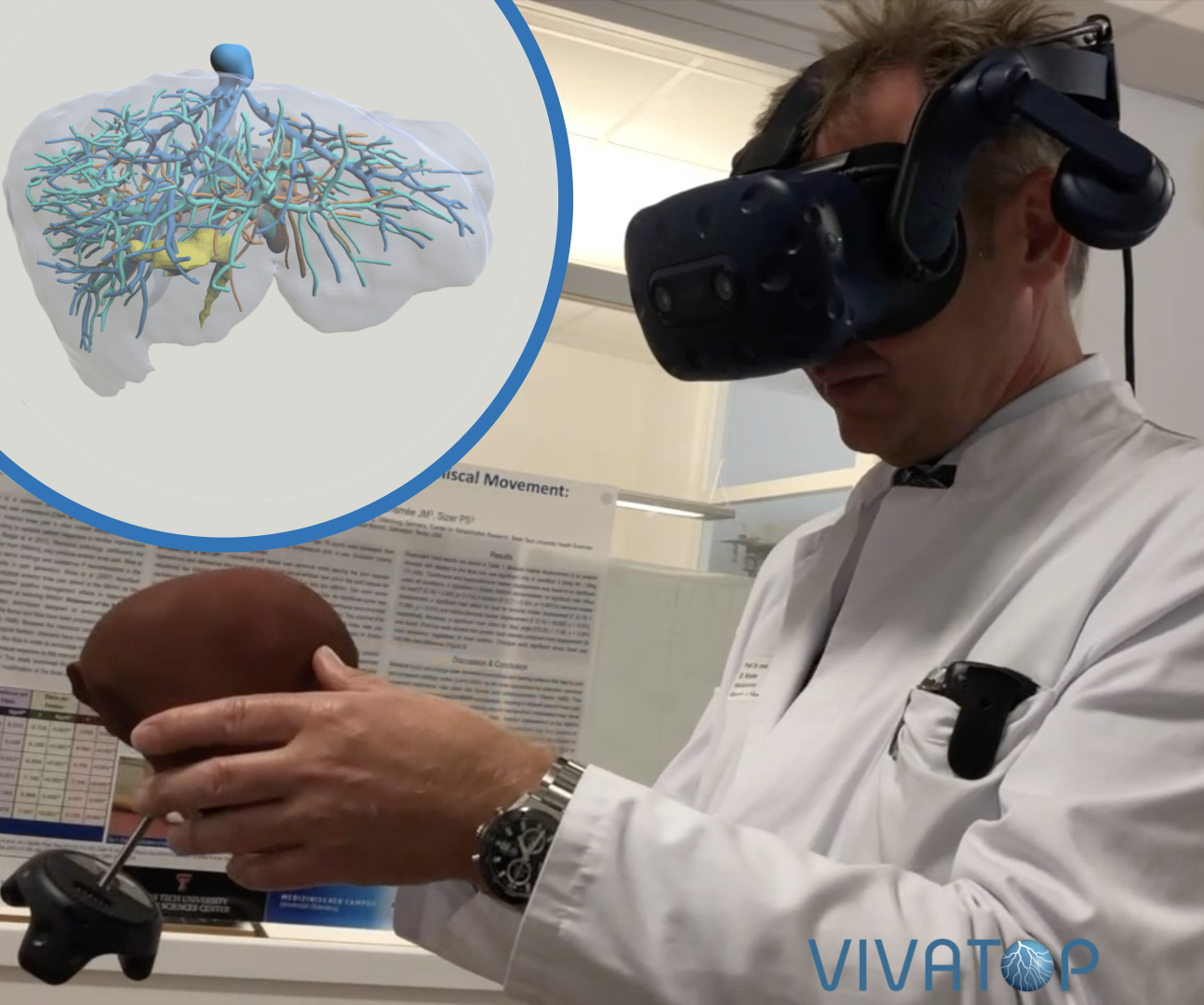
ActPad – A Smart Desk Platform to Enable User Interaction with IoT Devices
Sarah Delgado Rodriguez (Bundeswehr University Munich, LMU Munich), Sarah Prange (Bundeswehr University Munich, LMU Munich), Lukas Mecke (Bundeswehr University Munich, LMU Munich), Florian Alt (Bundeswehr University Munich)
Abstract | Tags: Late Breaking Work | Links:
@inproceedings{2021DelgadoActPad,
title = {ActPad – A Smart Desk Platform to Enable User Interaction with IoT Devices},
author = {Sarah Delgado Rodriguez (Bundeswehr University Munich, LMU Munich) and Sarah Prange (Bundeswehr University Munich, LMU Munich) and Lukas Mecke (Bundeswehr University Munich, LMU Munich) and Florian Alt (Bundeswehr University Munich)},
url = {https://www.unibw.de/usable-security-and-privacy, Website - Usable Security and Privacy Group, CODE Forschungsinstitut Cyber Defence
https://youtu.be/dVjEhE_Pg7w, Teaser Video},
doi = {10.1145/3411763.3451825},
year = {2021},
date = {2021-05-01},
abstract = {ActPad is a desk pad, capable of sensing capacitive touch input in desk setups. Our prototype can sense touches on both, its electrodes and on connected objects. ActPad’s interaction-space is customizable, allowing easy integration and extension of existing desk environments. In smart environments, users may interact with more than one device at the same time. This generates the need for new interaction mechanisms that bundle the control of multiple ubiquitous devices. We support this need through a platform that extends interaction with IoT devices. ActPad accounts for different ways of controlling IoT devices by enabling various modes of interaction – in particular simultaneous, sequential, implicit and explicit – and, hence, a rich input space. As a proof of concept, we illustrate several use cases, including, but not limited to, controlling the browser on a PC, turning lights on/off, switching songs, or preparing coffee.},
keywords = {Late Breaking Work},
pubstate = {published},
tppubtype = {inproceedings}
}

Ethical User Interfaces: Exploring the Effects of Dark Patterns on Facebook
Thomas Mildner (University of Bremen), Gian-Luca Savino (Human-Computer Interaction)
Abstract | Tags: Late Breaking Work | Links:
@inproceedings{2021MildnerEthical,
title = {Ethical User Interfaces: Exploring the Effects of Dark Patterns on Facebook},
author = {Thomas Mildner (University of Bremen) and Gian-Luca Savino (Human-Computer Interaction) },
url = {https://www.uni-bremen.de/dmlab, Website - DMLab University of Bremen
https://twitter.com/thmsmldnr, Twitter - Thomas Mildner
https://youtu.be/E_bzMOuQdgQ, YouTube - Teaser Video},
doi = {10.1145/3411763.3451659},
year = {2021},
date = {2021-05-01},
abstract = {Many researchers have been concerned with whether social media has a negative impact on the well-being of their audience. With the popularity of social networking sites (SNS) steadily increasing, psychological and social sciences have shown great interest in their effects and consequences on humans. In this work, we investigate Facebook using the tools of HCI to find connections between interface features and the concerns raised by these do- mains. Using an empirical design analysis, we identify interface interferences impacting users' online privacy. Through a subsequent survey (? = 116), we find usage behaviour changes due to increased privacy concerns and report individual cases of addiction and mental health issues. These observations are the results of a rapidly changing SNS creating a gap of understanding between users' interactions with the platform and future consequences. We explore how HCI can help close this gap and work towards more ethical user interfaces in the future.},
keywords = {Late Breaking Work},
pubstate = {published},
tppubtype = {inproceedings}
}

Fake Moods: Can Users Trick an Emotion-Aware VoiceBot?
Yong Ma (LMU Munich), Heiko Drewes (LMU Munich), Andreas Butz (LMU Munich)
Abstract | Tags: Late Breaking Work | Links:
@inproceedings{2021MaFake,
title = {Fake Moods: Can Users Trick an Emotion-Aware VoiceBot?},
author = {Yong Ma (LMU Munich) and Heiko Drewes (LMU Munich) and Andreas Butz (LMU Munich)},
url = {https://www.medien.ifi.lmu.de
},
doi = {10.1145/3411763.3451744 },
year = {2021},
date = {2021-05-01},
abstract = {The ability to deal properly with emotion could be a critical feature of future VoiceBots. Humans might even choose to use fake emotions, e.g., sound angry to emphasize what they are saying or sound nice to get what they want. However, it is unclear whether current emotion detection methods detect such acted emotions properly, or rather the true emotion of the speaker. We asked a small number of participants (26) to mimic five basic emotions and used an open source emotion-in-voice detector to provide feedback on whether their acted emotion was recognized as intended. We found that it was difficult for participants to mimic all five emotions and that certain emotions were easier to mimic than others. However, it remains unclear whether this is due to the fact that emotion was only acted or due to the insufficiency of the detection software. As an intended side effect, we collected a small corpus of labeled data for acted emotion in speech, which we plan to extend and eventually use as training data for our own emotion detection. We present the study setup and discuss some insights on our results.},
keywords = {Late Breaking Work},
pubstate = {published},
tppubtype = {inproceedings}
}
HaRT - The Virtual Reality Hand Redirection Toolkit
André Zenner (Saarland University & DFKI), Hannah Maria Kriegler (Saarland University & DFKI), Antonio Krüger (Saarland University & DFKI)
Abstract | Tags: Late Breaking Work | Links:
@inproceedings{Zenner2021Hart,
title = {HaRT - The Virtual Reality Hand Redirection Toolkit},
author = {André Zenner (Saarland University & DFKI) and Hannah Maria Kriegler (Saarland University & DFKI) and Antonio Krüger (Saarland University & DFKI)},
url = {https://umtl.cs.uni-saarland.de/ (lab page)
https://twitter.com/umtl
https://youtu.be/w_HhzcV0ndM (teaser)
https://youtu.be/4Gz2Sh8eduk (video figure)
https://github.com/AndreZenner/hand-redirection-toolkit},
doi = {0.1145/3411763.3451814},
year = {2021},
date = {2021-05-08},
publisher = {ACM},
abstract = {Past research has proposed various hand redirection techniques for virtual reality (VR). Such techniques modify a user's hand movements and have been successfully used to enhance haptics and 3D user interfaces. Up to now, however, no unified framework exists that implements previously proposed techniques such as body warping, world warping, and hybrid methods. In this work, we present the Virtual Reality Hand Redirection Toolkit (HaRT), an open-source framework developed for the Unity engine. The toolkit aims to support both novice and expert VR researchers and practitioners in implementing and evaluating hand redirection techniques. It provides implementations of popular redirection algorithms and exposes a modular class hierarchy for easy integration of new approaches. Moreover, simulation, logging, and visualization features allow users of the toolkit to analyze hand redirection setups with minimal technical effort. We present the architecture of the toolkit along with the results of a qualitative expert study.},
keywords = {Late Breaking Work},
pubstate = {published},
tppubtype = {inproceedings}
}
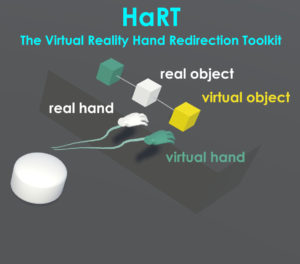
Investigating Document Layout and Placement Strategies for Collaborative Sensemaking in Augmented Reality
Weizhou Luo (Interactive Media Lab Dresden, Technische Universität Dresden), Anke Lehmann (Interactive Media Lab Dresden, Technische Universität Dresden), Yushan Yang (Interactive Media Lab Dresden, Technische Universität Dresden), Raimund Dachselt (Interactive Media Lab Dresden, Technische Universität Dresden)
Abstract | Tags: Late Breaking Work | Links:
@inproceedings{weizhuo2021document,
title = {Investigating Document Layout and Placement Strategies for Collaborative Sensemaking in Augmented Reality},
author = {Weizhou Luo (Interactive Media Lab Dresden, Technische Universität Dresden) and Anke Lehmann (Interactive Media Lab Dresden, Technische Universität Dresden) and Yushan Yang (Interactive Media Lab Dresden, Technische Universität Dresden) and Raimund Dachselt (Interactive Media Lab Dresden, Technische Universität Dresden)},
url = {https://imld.de/
https://twitter.com/imldresden
https://www.youtube.com/watch?v=0JTPCFsHvmc (teaser)
https://www.youtube.com/watch?v=xpGPXnAvaLg (video figure)},
doi = {10.1145/3411763.3451588},
year = {2021},
date = {2021-05-07},
abstract = {Augmented Reality (AR) has the potential to revolutionize our workspaces, since it considerably extends the limits of current displays while keeping users aware of their collaborators and surroundings. Collective activities like brainstorming and sensemaking often use space for arranging documents and information and thus will likely benefit from AR-enhanced offices. Until now, there has been very little research on how the physical surroundings might affect virtual content placement for collaborative sensemaking.
We therefore conducted an initial study with eight participants in which we compared two different room settings for collaborative image categorization regarding content placement, spatiality, and layout. We found that participants tend to utilize the room's vertical surfaces as well as the room's furniture, particularly through edges and gaps, for placement and organization. We also identified three different spatial layout patterns (panoramic-strip, semi-cylindrical layout, furniture-based distribution) and observed the usage of temporary storage spaces specifically for collaboration.},
keywords = {Late Breaking Work},
pubstate = {published},
tppubtype = {inproceedings}
}
We therefore conducted an initial study with eight participants in which we compared two different room settings for collaborative image categorization regarding content placement, spatiality, and layout. We found that participants tend to utilize the room's vertical surfaces as well as the room's furniture, particularly through edges and gaps, for placement and organization. We also identified three different spatial layout patterns (panoramic-strip, semi-cylindrical layout, furniture-based distribution) and observed the usage of temporary storage spaces specifically for collaboration.
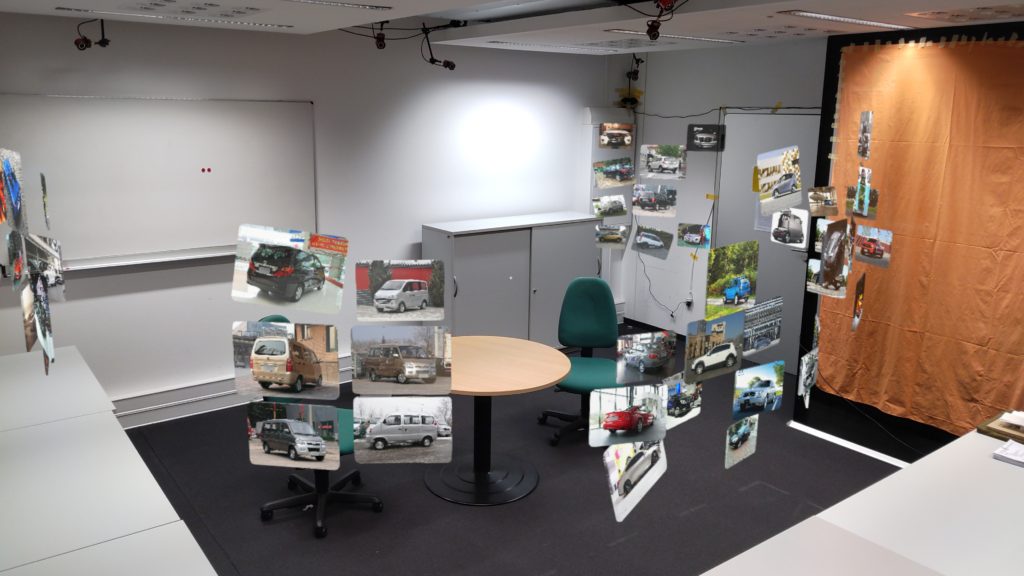
Investigating Simple Privacy Indicators for Supporting Users when Installing New Mobile Apps
Alina Stöver (Technical University of Darmstadt), Nina Gerber (Technical University of Darmstadt), Sushma Kaushik (Technical University of Darmstadt), Max Mühlhäuser (Technical University of Darmstadt), Karola Marky (University of Glasgow, Technical University of Darmstadt)
Abstract | Tags: Late Breaking Work | Links:
@inproceedings{2021StoeverInvestigating,
title = {Investigating Simple Privacy Indicators for Supporting Users when Installing New Mobile Apps},
author = {Alina Stöver (Technical University of Darmstadt) and Nina Gerber (Technical University of Darmstadt) and Sushma Kaushik (Technical University of Darmstadt) and Max Mühlhäuser (Technical University of Darmstadt) and Karola Marky (University of Glasgow, Technical University of Darmstadt)},
url = {https://teamdarmstadt.de, Website - Team Darmstadt},
doi = {10.1145/3411763.3451791},
year = {2021},
date = {2021-05-01},
abstract = {Mobile devices have become daily companions for millions of users. They have access to privacy-sensitive data about their users which stresses the importance of privacy. Users have to make privacy-related decisions already before app installation because once installed, apps can access potential privacy-sensitive data. In this work-in-progress, we present an in-depth investigation of privacy indicator visualizations for mobile app stores. We report the results of two consecutive user studies in which we investigate 1) visual depiction, 2) score, and 3) monetary value of collected data. Our studies reveal that a visual depiction by a privacy meter were easiest to understand for users, scores were easiest to spot, and monetary value was most difficult to interpret and requires further investigation. },
keywords = {Late Breaking Work},
pubstate = {published},
tppubtype = {inproceedings}
}
LYLO – Exploring Disclosed Configurations for Inter-Personal Location Sharing
Christina Schneegass (LMU Munich), Diana Irmscher (LMU Munich), Florian Bemmann (LMU Munich), Daniel Buschek (University of Bayreuth)
Abstract | Tags: Late Breaking Work | Links:
@inproceedings{Schneegass2021LYLO,
title = {LYLO – Exploring Disclosed Configurations for Inter-Personal Location Sharing},
author = {Christina Schneegass (LMU Munich) and Diana Irmscher (LMU Munich) and Florian Bemmann (LMU Munich) and Daniel Buschek (University of Bayreuth)},
url = {http://mimuc.de/, Website - MIMUC
https://twitter.com/mimuc, Twitter - MIMUC
https://www.instagram.com/mediagroup.lmu/, Instagram - MIMUC},
doi = {10.1145/3411763.3451652},
year = {2021},
date = {2021-05-07},
abstract = {Continuous location sharing (CLS) can foster intimacy, for example, for couples in long-distance relationships. However, turning off CLS can then raise suspicions. To address this, we developed nuanced sharing settings in a focus group (N = 6) and implemented them to moderate CLS in an Android app. Crucially, the app also discloses each person's current sharing settings to the partner. In a 16-day field study, four couples interacted with our app and the disclosed configurations, confirming the disclosure's positive effect on transparency. However, features obfuscating the location were considered superfluous, as participants preferred sharing their location exactly or not at all. While participants overall appreciated having the configuration options, changes in their partners’ configurations raised questions about their motivations. Instead, participants would adjust the configuration for different intimacy levels (colleague vs. partner) rather than different activities when using CLS with the same person.},
note = {LMU Medieninformatik (facebook) - cannot find a direct link},
keywords = {Late Breaking Work},
pubstate = {published},
tppubtype = {inproceedings}
}
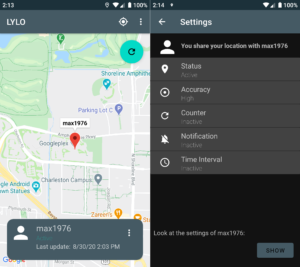
MEMEography: Understanding Users Through Internet Memes
Annika Kaltenhauser (Ergosign GmbH & LMU Munich), Nađa Terzimehić (LMU Munich), Andreas Butz (LMU Munich)
Abstract | Tags: Late Breaking Work | Links:
@inproceedings{2021KaltenhauserMEME,
title = {MEMEography: Understanding Users Through Internet Memes},
author = {Annika Kaltenhauser (Ergosign GmbH & LMU Munich), Nađa Terzimehić (LMU Munich), Andreas Butz (LMU Munich)},
url = {https://www.medien.ifi.lmu.de},
doi = {10.1145/3411763.3451581},
year = {2021},
date = {2021-05-01},
abstract = {In this paper, we propose a method we call MEMEography for HCI research to understand people and their interactional contexts from the remixed internet memes they post in internet communities. While memes might not be the most obvious choice of a research subject, they allow us to investigate unfamiliar domains even when access to the field is beyond reach. We describe an initial approach of data selection, collection, prioritization and analysis. In addition, we demonstrate the kinds of insights we can gain through MEMEographies by analyzing a corpus of memes in the intensive care unit (ICU) context posted 2020 on Instagram. ICU memes open up insights into the environment, work practices, challenges, emotions and familiarized us with ICU practitioners' language, even though access to an actual ICU was completely impossible during 2020.},
keywords = {Late Breaking Work},
pubstate = {published},
tppubtype = {inproceedings}
}

On Ubiquitous Technology, a Digital World and their Influence on People's Feeling and Control of Presence in Everyday Life
Nađa Terzimehić (LMU Munich), Ceenu George (LMU Munich), Renate Häuslschmid (University of Freiburg), Heinrich Hussmann (LMU Munich)
Abstract | Tags: Late Breaking Work | Links:
@inproceedings{2021TerzimehicUbiquitous,
title = {On Ubiquitous Technology, a Digital World and their Influence on People's Feeling and Control of Presence in Everyday Life},
author = {Nađa Terzimehić (LMU Munich) and Ceenu George (LMU Munich) and Renate Häuslschmid (University of Freiburg) and Heinrich Hussmann (LMU Munich)},
url = {http://www.medien.ifi.lmu.de/, Website - Media Informatic LMU Munich},
doi = {10.1145/3411763.3451831},
year = {2021},
date = {2021-05-07},
abstract = {Ubiquitous technology, e.g., smartphones or tablets, has created a continuously available digital world, drastically changing our feeling of being in the here and now -- named presence. We thus increasingly shift between the real and the digital world, ranging from losing awareness of real surroundings to cutting out the digital world to truly be in the real one. In this work, we aim to explore the middle ground in between. We move beyond classic VR research on presence and look at everyday ubiquitous technology and its influence on presence in the real and digital world. By means of a focus group (N=6) and a subsequent online survey (N=36), we gathered individual notions of presence as well as experiences and situations in which people move between the worlds. We discuss the need to further explore presence and its dynamics across the real and digital worlds in everyday life.},
keywords = {Late Breaking Work},
pubstate = {published},
tppubtype = {inproceedings}
}
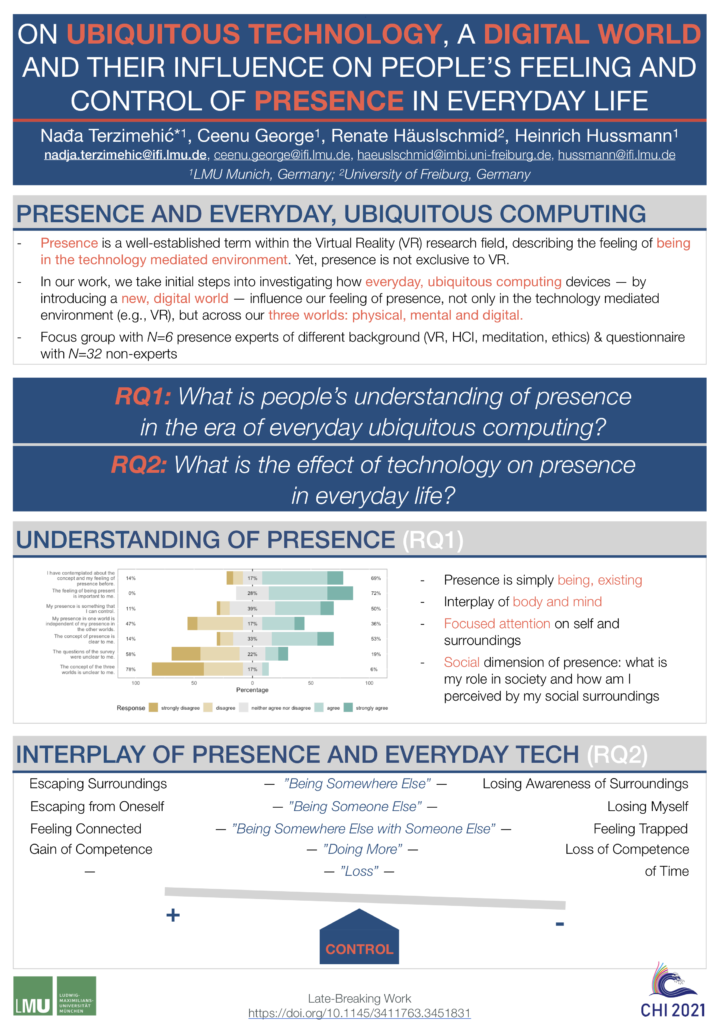
Potential of Wrist-worn Vibrotactile Feedback to Enhance the Perception of Virtual Objects during Mid-air Gestures
Michael Kronester (Technische Hochschule Ingolstadt), Andreas Riener (Technische Hochschule Ingolstadt), Teo Babic (BMW Group)
Abstract | Tags: Late Breaking Work | Links:
@inproceedings{2021KronesterPotential,
title = {Potential of Wrist-worn Vibrotactile Feedback to Enhance the Perception of Virtual Objects during Mid-air Gestures},
author = {Michael Kronester (Technische Hochschule Ingolstadt) and Andreas Riener (Technische Hochschule Ingolstadt) and Teo Babic (BMW Group)},
url = {https://hcig.thi.de/, Website - HCI Technische Hochschule Ingolstadt},
doi = {10.1145/3411763.3451655},
year = {2021},
date = {2021-05-01},
abstract = {Numerous systems based on mid-air gestures have recently been proposed as a digital variant of object manipulation with hands. Simultaneously, however, direct haptic feedback is lost, eliminating an important aspect that we are familiar with from real-life interaction. We believe that smartwatches, as widely used personal devices, could provide a platform for accessible, flexible, and unobtrusive integration of haptic feedback into mid-air gesture interaction. We prototyped a vibrotactile wrist band with four vibration actuators aiming at communicating invisible, undetectable virtual object properties such as electricity, weight, and tension into 3D haptic experiences. In this paper, we present findings from a user study (n=18) that examined the suitability of different vibration patterns (variation in intensity, temporal profile, rhythm, and location). Results show that all feedback variants have a positive impact on user experience (UX) when interacting with virtual objects. Constant, continuous patterns outweigh the other variants examined.},
keywords = {Late Breaking Work},
pubstate = {published},
tppubtype = {inproceedings}
}
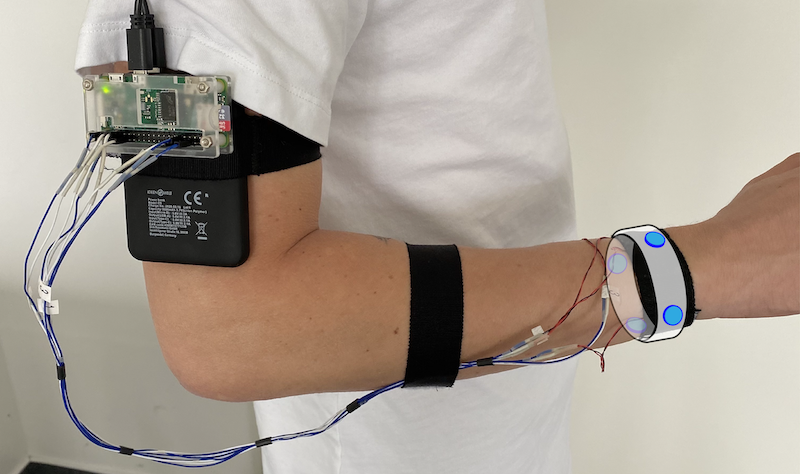
Quantified Cycling Safety: Towards a Mobile Sensing Platform to Understand Perceived Safety of Cyclists
Andrii Matviienko (Technical University of Darmstadt), Florian Heller (Hasselt University), Bastian Pfleging (Eindhoven University of Technology)
Abstract | Tags: Late Breaking Work | Links:
@inproceedings{2021MatviienkoQuantified,
title = {Quantified Cycling Safety: Towards a Mobile Sensing Platform to Understand Perceived Safety of Cyclists},
author = {Andrii Matviienko (Technical University of Darmstadt) and Florian Heller (Hasselt University) and Bastian Pfleging (Eindhoven University of Technology)},
url = {https://teamdarmstadt.de, Website - Team Darmstadt
https://www.facebook.com/teamdarmstadt, Facebook - Team Darmstadt},
doi = {10.1145/3411763.3451678},
year = {2021},
date = {2021-05-01},
abstract = {Today's level of cyclists' road safety is primarily estimated using accident reports and self-reported measures. However, the former is focused on post-accident situations and the latter relies on subjective input. In our work, we aim to extend the landscape of cyclists' safety assessment methods via a two-dimensional taxonomy, which covers data source (internal/external) and type of measurement (objective/subjective). Based on this taxonomy, we classify existing methods and present a mobile sensing concept for quantified cycling safety that fills the identified methodological gap by collecting data about body movements and physiological data. Finally, we outline a list of use cases and future research directions within the scope of the proposed taxonomy and sensing concept.},
keywords = {Late Breaking Work},
pubstate = {published},
tppubtype = {inproceedings}
}

Think Harder! Investigating the Effect of Password Strength on Cognitive Load during Password Creation
Yasmeen Abdrabou (Bundeswehr University Munich), Yomna Abdelrahman (Bundeswehr University Munich), Mohamed Khamis (University of Glasgow), Florian Alt (Bundeswehr University Munich)
Abstract | Tags: Late Breaking Work | Links:
@inproceedings{2021AbdrabouThink,
title = {Think Harder! Investigating the Effect of Password Strength on Cognitive Load during Password Creation },
author = {Yasmeen Abdrabou (Bundeswehr University Munich) and Yomna Abdelrahman (Bundeswehr University Munich) and Mohamed Khamis (University of Glasgow) and Florian Alt (Bundeswehr University Munich)},
url = {https://www.unibw.de/usable-security-and-privacy-en/publikationen/publications, Website - Usable Security and Privacy Group, Research Institute CODE},
doi = {10.1145/3411763.3451636},
year = {2021},
date = {2021-05-01},
abstract = {Strict password policies can frustrate users, reduce their productivity, and lead them to write their passwords down. This paper investigates the relation between password creation and cognitive load inferred from eye pupil diameter. We use a wearable eye tracker to monitor the user’s pupil size while creating passwords
with different strengths. To assess how creating passwords of different strength (namely weak and strong) influences users’ cognitive load, we conducted a lab study (? = 15). We asked the participants
to create and enter 6 weak and 6 strong passwords. The results showed that passwords with different strengths affect the pupil diameter, thereby giving an indication of the user’s cognitive state. Our initial investigation shows the potential for new applications in the field of cognition-aware user interfaces. For example, future
systems can use our results to determine whether the user created a strong password based on their gaze behavior, without the need to reveal the characteristics of the password.},
keywords = {Late Breaking Work},
pubstate = {published},
tppubtype = {inproceedings}
}
with different strengths. To assess how creating passwords of different strength (namely weak and strong) influences users’ cognitive load, we conducted a lab study (? = 15). We asked the participants
to create and enter 6 weak and 6 strong passwords. The results showed that passwords with different strengths affect the pupil diameter, thereby giving an indication of the user’s cognitive state. Our initial investigation shows the potential for new applications in the field of cognition-aware user interfaces. For example, future
systems can use our results to determine whether the user created a strong password based on their gaze behavior, without the need to reveal the characteristics of the password.
VirtualLadder: Using Interactive Projections for Agility Ladder Training
Felix Kosmalla (DFKI, Saarland Informatics Campus), Fabian Hupperich (Saarland Informatics Campus), Anke Hirsch (DFKI, Saarland Informatics Campus), Florian Daiber (DFKI, Saarland Informatics Campus), Antonio Krüger (DFKI, Saarland Informatics Campus)
Abstract | Tags: Late Breaking Work | Links:
@inproceedings{2021KosmallaVirtual,
title = {VirtualLadder: Using Interactive Projections for Agility Ladder Training},
author = {Felix Kosmalla (DFKI, Saarland Informatics Campus) and Fabian Hupperich (Saarland Informatics Campus) and Anke Hirsch (DFKI, Saarland Informatics Campus) and Florian Daiber (DFKI, Saarland Informatics Campus) and Antonio Krüger (DFKI, Saarland Informatics Campus)},
url = {https://umtl.cs.uni-saarland.de, Website - UMTLab
https://www.facebook.com/UMTLab/, Facebook - UMTLab
},
doi = {10.1145/3411763.3451638},
year = {2021},
date = {2021-05-07},
abstract = {Agility is the ability to change your body's position in a fast and efficient way while maintaining control of speed and direction. To develop this skill, the use of agility ladders is a widespread and well-known training method. While drills vary, having a human expert explaining and monitoring the exercises is usually advantageous. So far, only a few approaches to interactive systems for agility ladder training have been presented. In this work, we propose an interactive projection system to support an athlete in performing those drills. To investigate the effects of the location of those projections, we conducted an initial study with twelve participants using qualitative and quantitative methods. We found that while projecting instructions and feedback on the floor was favored, participants who were presented the same information in front of them on a projected screen partially performed better in a subsequent agility assessment.},
keywords = {Late Breaking Work},
pubstate = {published},
tppubtype = {inproceedings}
}
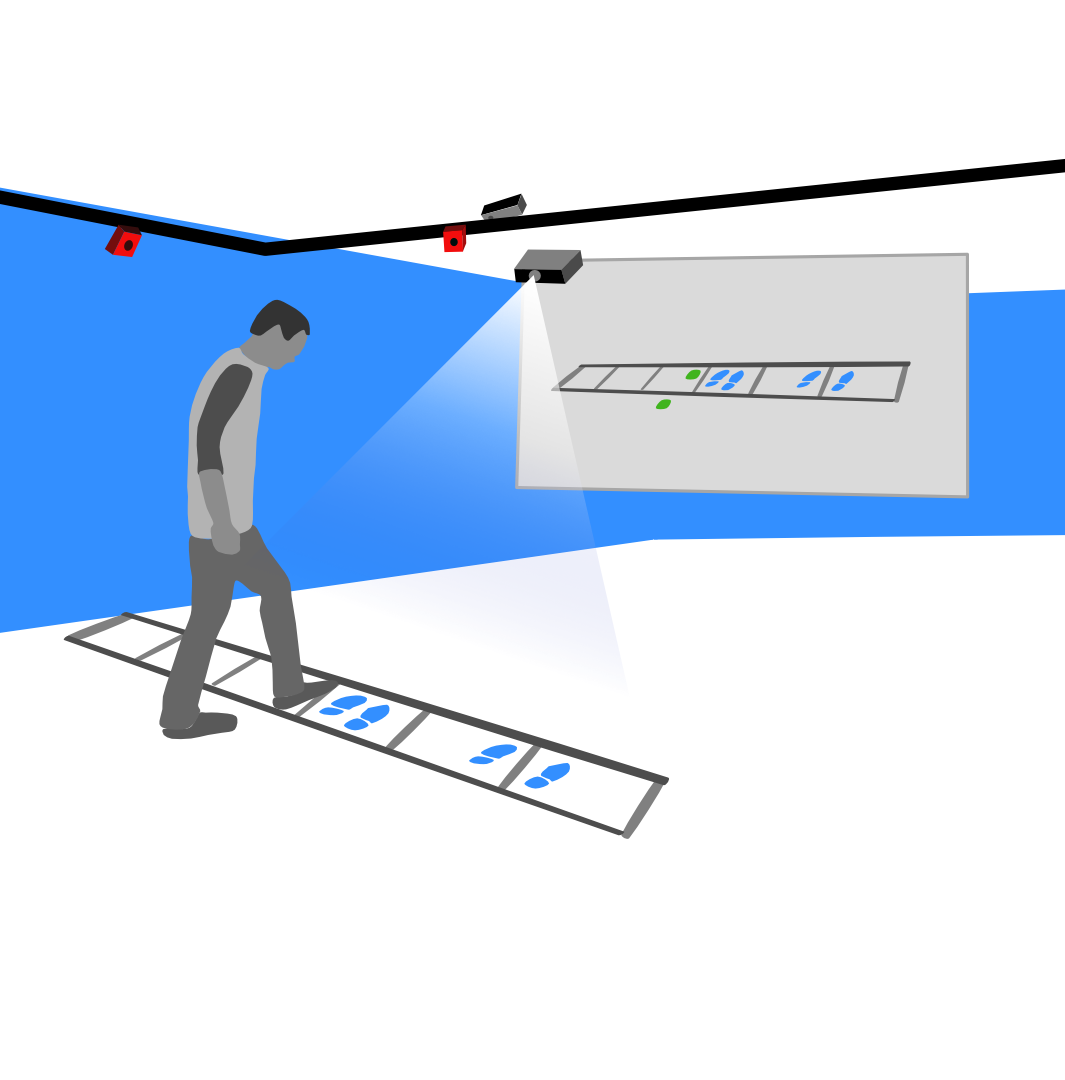
VRtangibles: Assisting Children in Creating Virtual Scenes using Tangible Objects and Touch Input
Andrii Matviienko (Technical University of Darmstadt), Marcel Langer (Technical University of Darmstadt), Florian Müller (Technical University of Darmstadt), Martin Schmitz (Technical University of Darmstadt), Max Mühlhäuser (Technical University of Darmstadt)
Abstract | Tags: Late Breaking Work | Links:
@inproceedings{2021MatviienkoVRtangibles,
title = {VRtangibles: Assisting Children in Creating Virtual Scenes using Tangible Objects and Touch Input},
author = {Andrii Matviienko (Technical University of Darmstadt) and Marcel Langer (Technical University of Darmstadt) and Florian Müller (Technical University of Darmstadt) and Martin Schmitz (Technical University of Darmstadt) and Max Mühlhäuser (Technical University of Darmstadt)},
url = {https://teamdarmstadt.de, Website - Team Darmstadt
https://www.facebook.com/teamdarmstadt, Facebook - Team Darmstadt},
doi = {10.1145/3411763.3451671},
year = {2021},
date = {2021-05-01},
abstract = {Children are increasingly exposed to virtual reality (VR) technology as end-users. However, they miss an opportunity to become active creators due to the barrier of insufficient technical background. Creating scenes in VR requires considerable programming knowledge and excludes non-tech-savvy users, e.g., school children. In this paper, we showcase a system called VRtangibles, which combines tangible objects and touch input to create virtual scenes without programming. With VRtangibles, we aim to engage children in the active creation of virtual scenes via playful hands-on activities. From the lab study with six school children, we discovered that the majority of children were successful in creating virtual scenes using VRtangibles and found it engaging and fun to use.},
keywords = {Late Breaking Work},
pubstate = {published},
tppubtype = {inproceedings}
}
